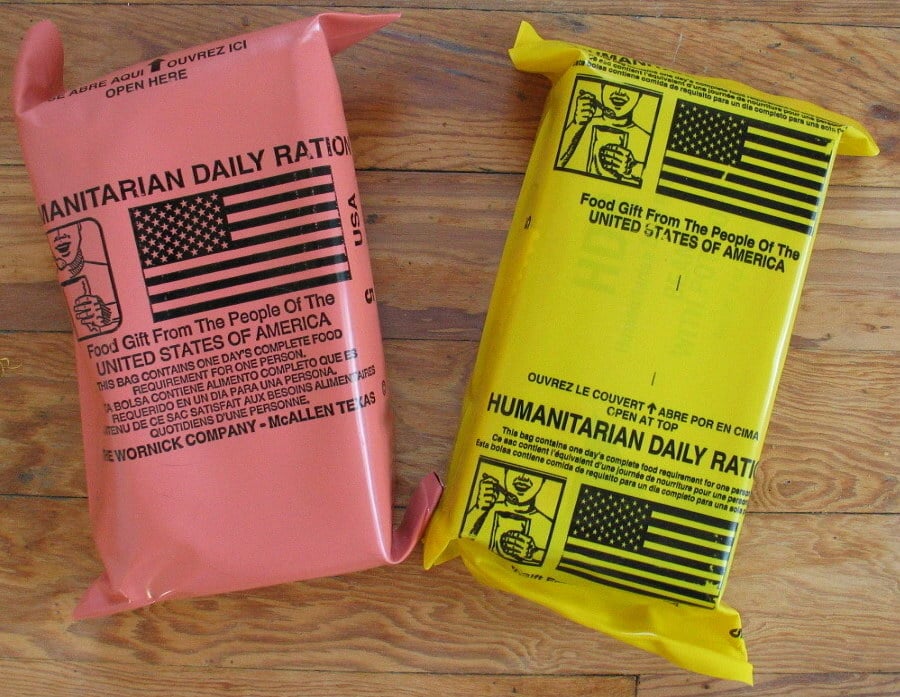Humanitarian Daily Rations (HDRs) are food rations produced in the United States intended to be distributed to civilians and non-military personnel during humanitarian crises. Each is intended to provide a single person’s daily food supply and contains slightly more than 2,200 calories or 9,200 kJ. They have a three-year shelf life and are intended to be acceptable to many religious and ethnic groups. But did you know why they changed the color of human ration packs?
After discovering that the same shade of yellow was also used for air-dropped cluster bombs, the packaging color for air-dropped humanitarian ration packs had to be changed from yellow to salmon.
Humanitarian Daily Rations
Humanitarian daily rations (HDRs) are food rations produced in the United States intended to be distributed to civilians and non-military personnel during humanitarian crises. Each is intended to provide a single person’s daily food supply and contains slightly more than 2,200 calories or 9,200 kJ. They have a three-year shelf life and are intended to be acceptable to many religious and ethnic groups.
These rations are packaged to withstand harsh environmental conditions and allow for airdrops when necessary. DLA Troop Support is currently procuring and making available to the customer only the HDR. However, when a need exists, the humanitarian meal concept can be tailored in terms of packaging, nutritional requirements, and individual components, implemented and made available to meet the needs of different situations.
The original need for the HDR was identified by the Defense Security Cooperation Agency-Humanitarian Assistance or Demining Activities (DSCA-HA/D) to feed large populations of displaced persons or refugees under emergency conditions.
The HDR is conceptually similar to ready-to-eat meals. It comprises ready-to-eat thermostabilized entrees and complementary components and is packaged in structurally identical materials to the MRE. The similarity, however, ends there.
The components are intended to feed a moderately malnourished person for a full day. To ensure the broadest possible acceptance from a diverse range of potential consumers with various religious and dietary restrictions worldwide, the HDR contains no animal products or by-products except minimal amounts of dairy products.
Alcohol and its derivatives are also prohibited. The meal bag is similar to an MRE meal bag, except it is salmon in color and contains graphics demonstrating how to open the bag and how to eat the contents. The shipping container is similar to the MRE, except it holds ten meal bags and has HDR-specific markings and graphics. (Source: Defense Logistics Agency)
What is in the Human Ration Packs?
Because the meal is intended to be a full day’s worth of food, each meal bag contains at least two entrees. Complementary components are also included to ensure that the daily nutritional requirements of not less than 2200 calories, broken down as 10-13 percent protein, 27-30 percent fat, and not less than 60 percent carbohydrates, are met. The only non-food items in the meal bag are a spoon and a moist towelette that does not contain alcohol. (Source: Defense Logistics Agency)
Image From: MRE Info
